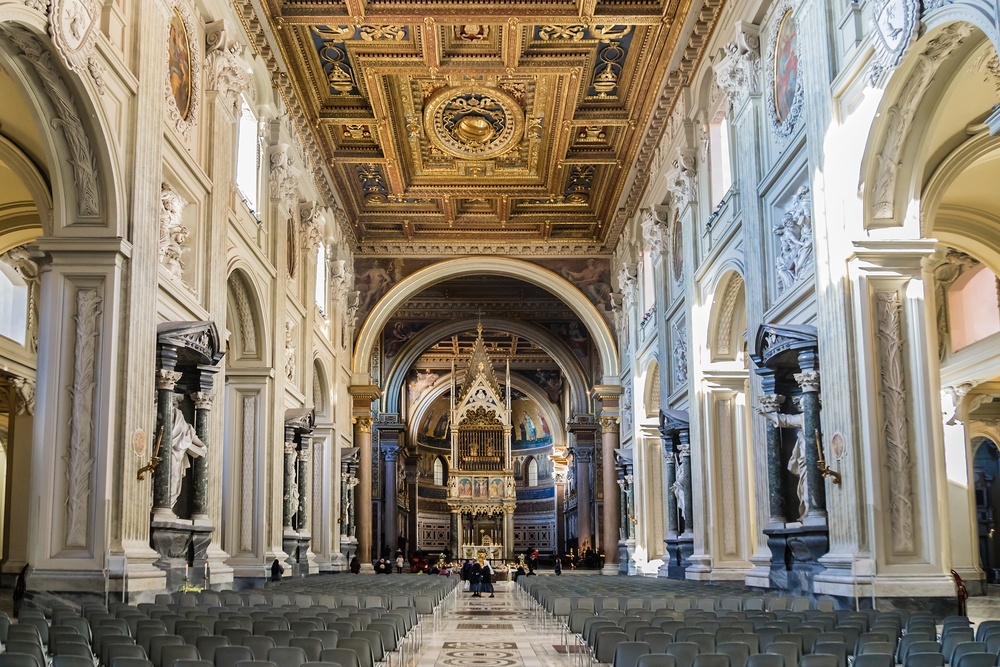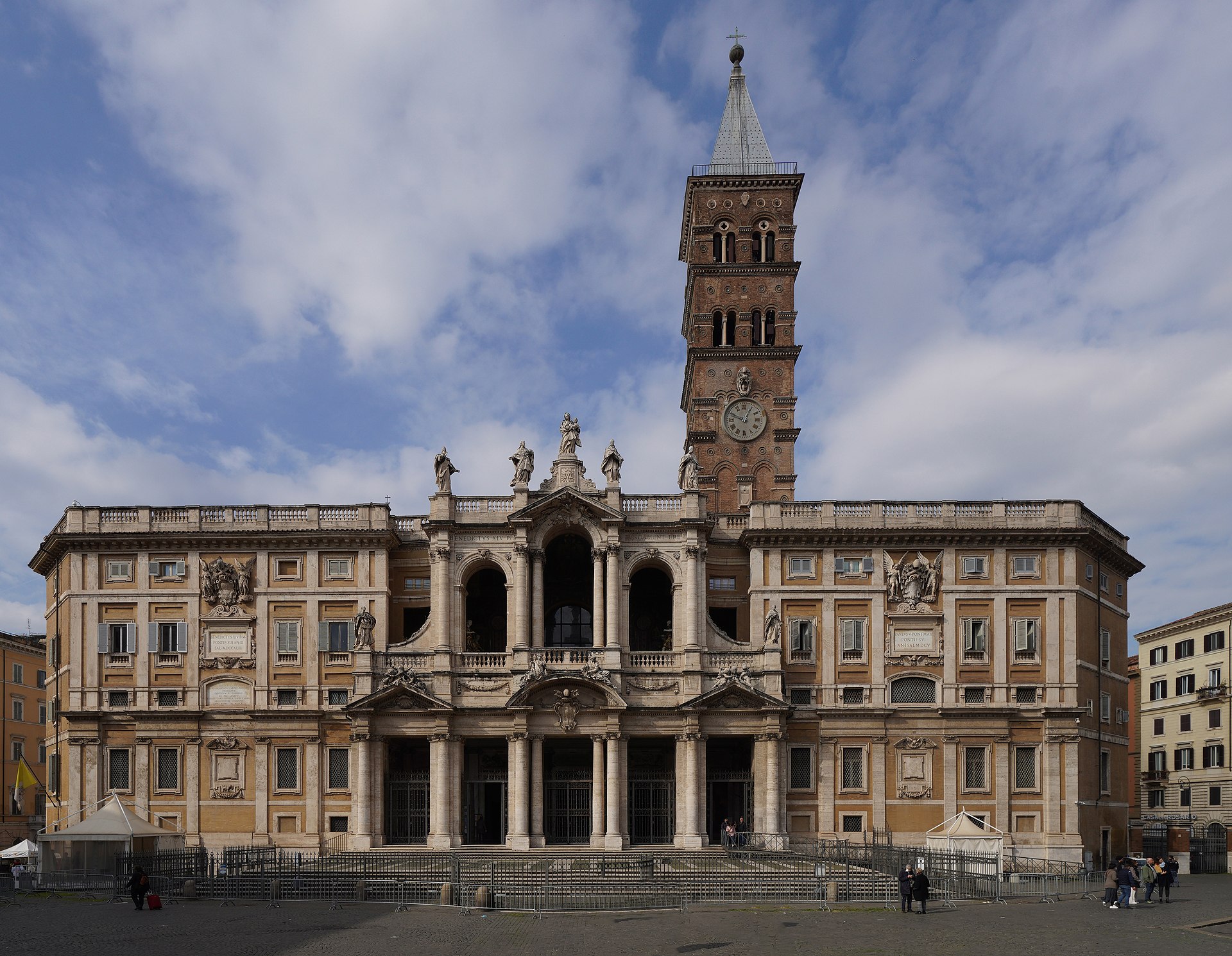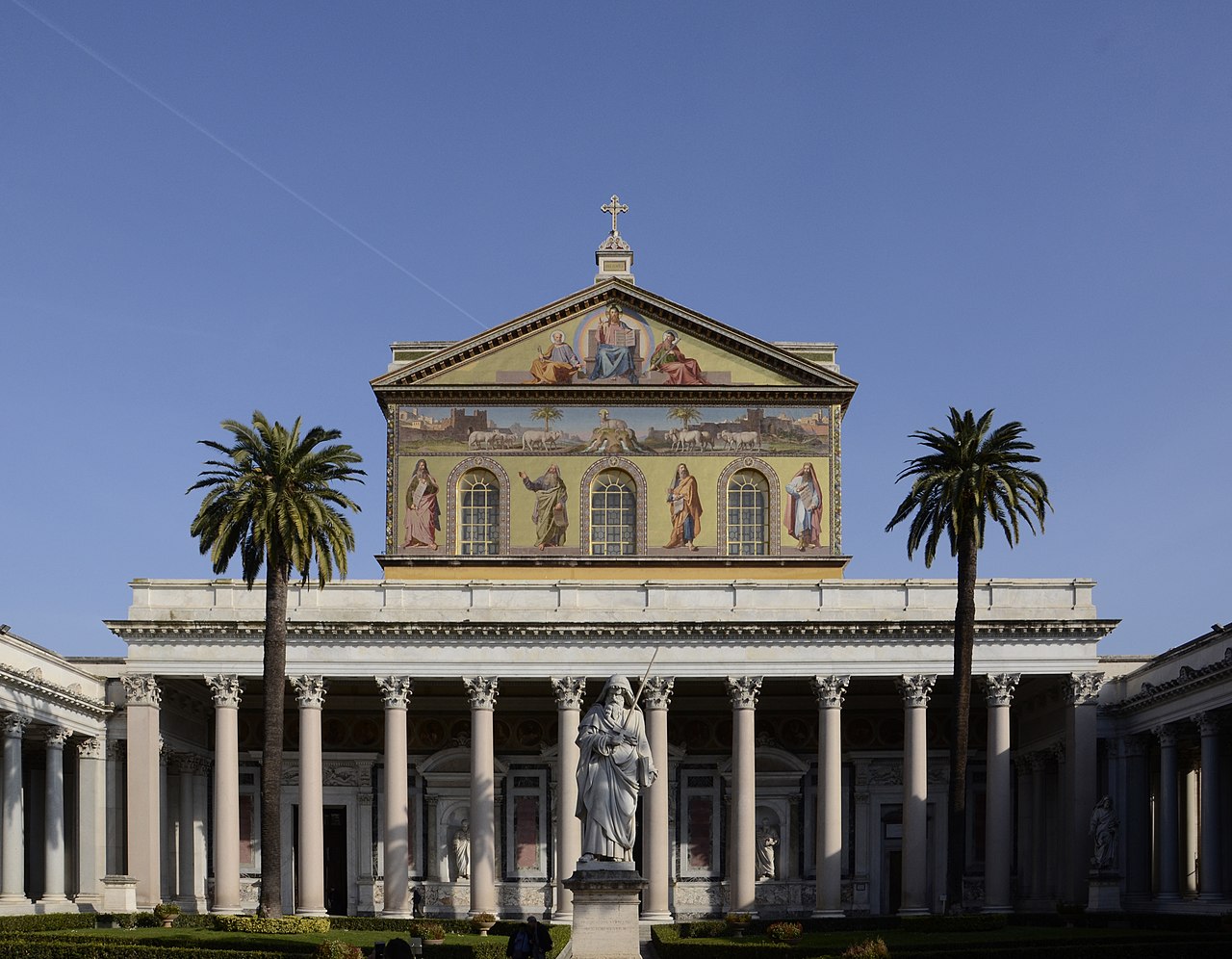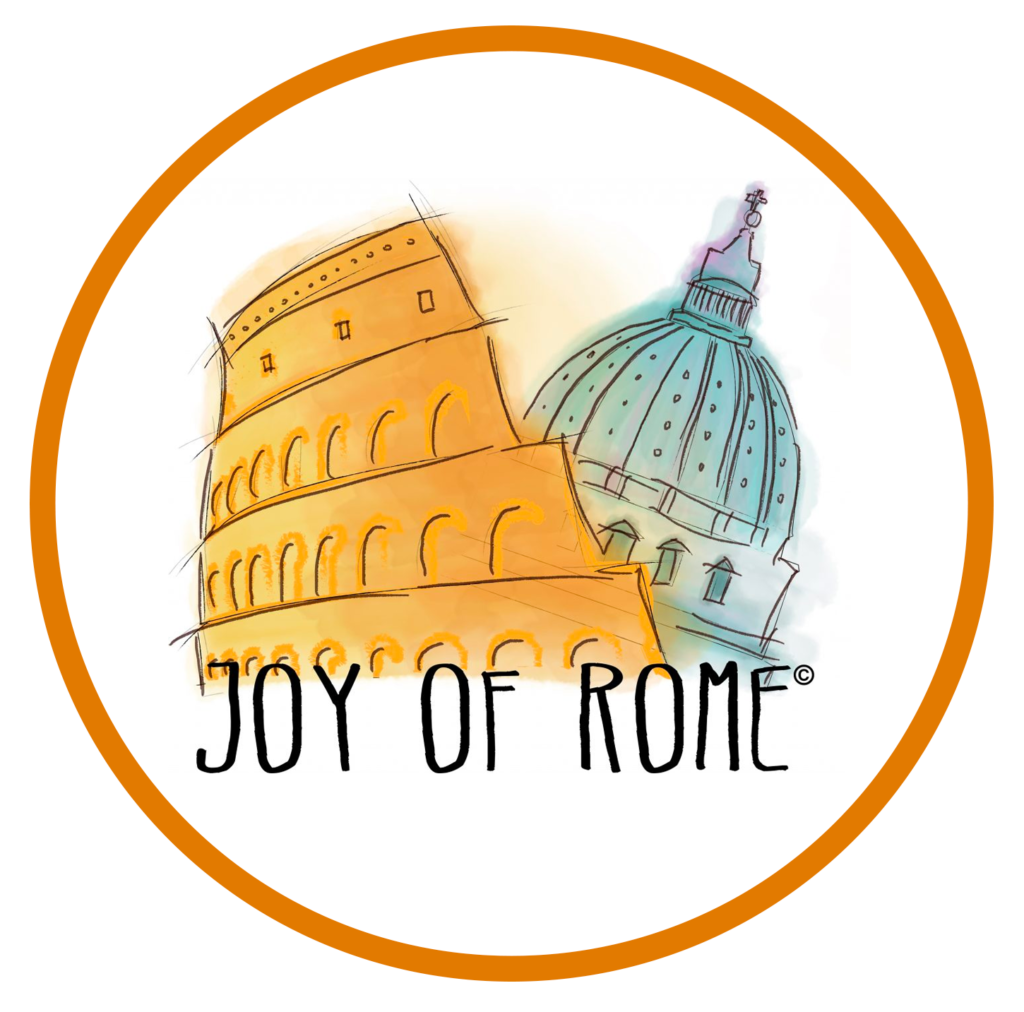The Three Basilicas of the Popes
If you want to be a real pilgrim, then you need to see more than only Saint Peter’s Basilica.
Check the list of the three papal basilicas that you visit in our dedicated tour:
The Basilica of San Giovanni in Laterano
(Saint John Lateran)

The first basilica in Rome constructed under Constantine. Yes, that’s right! The first church constructed in Rome was not Saint Peter’s but Saint John in Lateran which is why it’s considered the cathedral of Rome, the Pope’s church in his role as Bishop of Rome. The palace behind the church was the Pope’s residence before it was moved to the Vatican City. This alone is enough for you to understand why we have included it on our tour, but there are many more reasons:
The masterpieces within the Basilica of San Giovanni in Laterano:
When Pope Innocent X decided to modernise the basilica, he trusted the works to the great talents of Francesco Borromini! Just like that, the most famous rival of Gian Lorenzo Bernini and one of the greatest geniuses of all time, was responsible for evocative arrangement of the church’s internal space. The artist was bound to certain pre-existing architectural elements, such as the ceiling, the cosmatesque flooring, which he restored and integrated into his designs. He created an extraordinary masterpiece, using the fantastical spaces and lighting as only his skills could manage. We are sure that you won’t be able to stop yourself when taking photos these creatively reinvented spaces. Here’s an example of Borromini’s artistry – although the columns of the original nave were enclosed in new pillars, the ancient walls of Constantine’s original basilica remain visible in some areas, like relics of the past. Then within the niches of the nave you will discover the grand sculptures of the apostles.
The not to be masterpieces outside of the church:
The first is already in the portico – the antique bronze doors of Curia Iulia (the Roman Senate) were reused for the new entrance of the basilica in 1660! This is an amazing example of modern constructions re-purposing materials from ancient Rome, don’t you think?
On the right side of the basilica stands one of the tallest and oldest Egyptian obelisks ever brought to Rome: just imagine, it dates from the 2000 B.C.!
If you’re not already impressed, a little further along you will find the building which holds the Holy Stairs, 28 marble steps protected by wood. Jesus climbed these steps to a room where he was interrogated by Pontius Pilate before the crucifixion. Impressive, right?
Basilica of Santa Maria Maggiore
(Saint Mary Major)

We like everything about this basilica: its location, history, the architecture and its ornamentation. This is not to be missed! The church was built on one of the seven hills of Rome, Esquilino, and you’ll notice it from a distance. Why is it here? Because of an amazing miracle! During the night of August 4 in the year 352 a wealthy Roman patrician named Giovanni saw the Virgin Mary in a dream. She told him to build a church on the place where, the next day, he would find … fresh snow! In the morning, Giovanni ran to Pope Liberio to tell him of his dream and about the miracle that had occurred on the hill of Esquilino. The Pope decided to begin construction of the church immediately. If you’ve ever been in Rome on August 5 you will know that every year the “miracle of the snow” is commemorated. During the evocative celebration you will see a cascade of white petals falling from the basilica’s cupola … a snowfall in the height of summer!
The masterpieces inside Basilica di Santa Maria Maggiore:
For a start, this is the only one of the four churches that has preserved the original structure of the early Christian church. It is also one of the few that has a series of mosaics conserved intact in the apse and along the nave. Together with your guide you will “read” the mosaic and see the stories they tell! Another interesting piece of art preserved in the Basilica is the little sister to the Sistine Chapel in the Vatican, made for a different Pope Sisto. Michelangelo’s most famous work was commissioned by Pope Sisto IV, this one was commissioned by Sisto V. So after this visit you’ll be able to say that you’ve seen both the Sistine Chapels of Rome! Finally, within Santa Maria Maggiore is the tomb of Gian Lorenzo Bernini and his family and we’ll definitely find the time to pay our respects to one of the most famous artists of the 17th century.
The great works of art not to be missed outside the church:
The façade is the magnificent work of Ferdinando Fuga (1741), with the beautiful mosaics of the upper loggia of the portico created by Filippo Rusuti. The story they tell is that of the miracle of the snow and the creation of the Basilica. Behind the church is the great obelisk, 14.75 metres tall and without any trace of hieroglyphs showing its date or place of origin, which are still a mystery …
Basilica of San Paolo fuori le Mura
(Saint Paul Outside the Walls)

The story of the apostle Saint Paul, along with that of Saint Peter, is one of the most important in Christian history, which is why this Basilica is dedicated to him. This basilica was also founded under Constantine, as were San Giovanni in Laterano and San Pietro. Saint Paul is the second largest patriarchal Basilica in Rome after that of the Vatican.
The journey to the church is, we think, enough to merit the visit. We’ll go along Via Ostiense and pass through the Aurelian wall at the Porta San Paolo – a part of the ancient city!
Just as with Saint Peter’s, this Basilica was constructed near where Saint Paul was martyred and buried (that’s why it is outside the walls, not inside the walls). This soon became an important place of pilgrimage and so it’s not to be missed on our tour.
The masterpieces within the Basilica of Saint Paul Outside the Walls:
We’ll start by saying that what you see today is not the original church. On the night of 15 July 1823 a fire began that lasted around 5 hours doing irreparable damage to the Basilica. The only part of the church that didn’t collapse was the transept along with one of the jewels of the church: the ciborium of Arnolfo di Cambio! What is a ciborium and who was Arnolfo di Cambio? And why is this such an important object? Discover the answers on our tour!
The reconstruction sought to retain the architectural elements of Constantine’s original, ancient Basilica. The result is absolutely breathtaking! The new basilica Pope Leo XII aimed to rebuild had great support from across the Christian world. Generous offers of assistance came from the likes of Tsar Nicholas I, who donated blocks of malachite for the two altars of the transept, and the viceroy of Egypt sent alabaster columns. The King of Sardinia and the Two Sicilies, the king of France, and the sovereigns of the Netherlands also made donations.
The things we like outside the church:
This is the only basilica entrance that welcomes you with a beautiful atrium (quadriportico) with the statue of Saint Paul at its centre. Even more precious is the peaceful, medieval cloister. Walking between the splendid columns carved by the Vassalletto family and walls decorated with ancient relics, it’s possible to have a taste of the monastic life led within the basilica’s abbey. Take a moment among the monks who still walk these paths on their way to celebrate the liturgy around the tomb of Saint Paul the Apostle. The Cloister of Saint Paul is one of the marvels of the 13th century and the price to enter its peace and silence is €4.
Curious to note: There is also a Saint Paul’s Inside the Walls which is the Anglican Church of Rome and it’s on via Nazionale. The mosaic that decorates the apse was designed by Edward Burne-Jones. If you look closely you can see that some of the figures depicted resemble famous figures of the 19th century. For example, Saint James has the face of Giuseppe Garibaldi, Saint Andrew resembles Abraham Lincoln, and Saint Patrick looks like General Grant, principal characters in the American Civil War!
So…Curious now?
Book your experience and complete the Tour of the Basilicas of the Popes in Rome to be like a pilgrim in the Middle Age!
